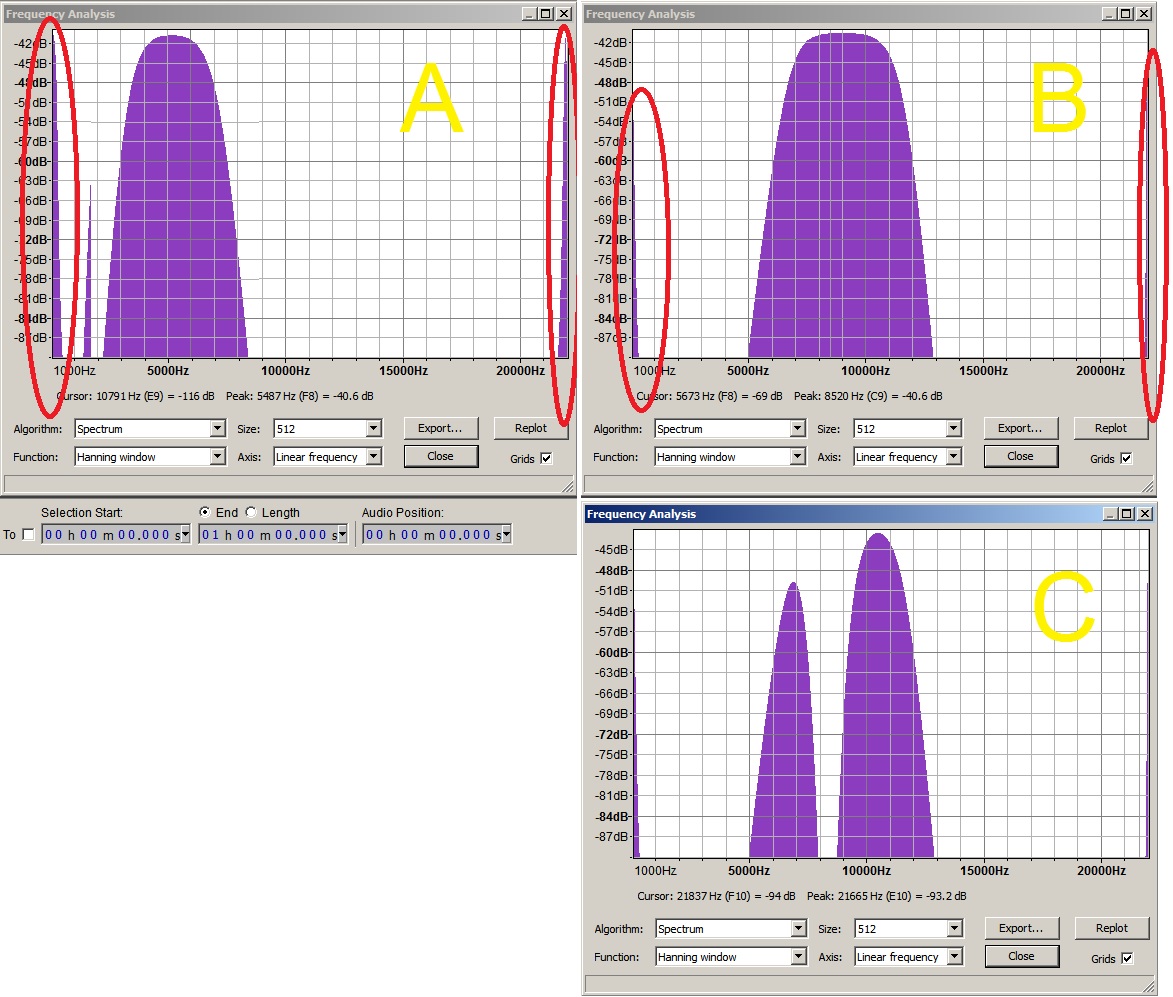In times past, I see that others suffering from Tinnitus have turned to the Audactiy community for insight and assistance when it came to using Sound Therapy for their affliction:
How to Notch above 10,000MH
https://forum.audacityteam.org/t/how-to-notch-above-10-000mh/27480/1
Notch Filter Preference and Tinnitus
https://forum.audacityteam.org/t/notch-filter-preference-and-tinnitus/13024/1
Allow me to be more direct and ask for specific sound sample of white noise be produced in my efforts to manage my Tinnitus.
I am in need of a number of them. Each will emit a specific frequency and each will be used, in turn, to determine the best effectiveness in treating Tinnitus.
For those not readily familiar with Tinnitus, it’s essentially the result of nerve damage. There is a range of sound frequencies I can no longer hear in my left ear. In other words, there is a region of the cochlea in my left ear where the hairlike nerve endings are now damaged. At one time, each were dedicated to a particular sound frequency, but now these hairlike nerve endings no longer work and no longer pick up their assigned sound frequencies. I don’t hear those frequencies in the outside world any more. It’s suggest however, I continue to somewhat do so in the form of Tinnitus.
You see, those damaged nerve endings are still attached to still functioning neurons that run to the audio cortex. Because these neurons are still functioning and now starving for stimuli, they are now prone to the harmonic feedback of their neighbouring neuron connections with their still working hairlike nerve endings. These now ‘decapitated’ neurons begin to fire on their own, and I then perceive these signals (or more specially my brain then perceives these signals) as tones and hissing sounds that we call Tinnitus.
Conventional doctrine when it came to sound therapy for Tinnitus had patients dedicate hours and days determining their tinnitus frequency ( i.e. the very sound they are perceiving every waking moment of their lives) as it would then be this frequency that they were to listen to (Harmonic Sound Therapy) or not listen (Notched Sound Therapy) through the therapeutic process depending on which therapy you prescribed to.
For example, the Harmonic Sound Therapy was composed of a series of narrow-band noise peaks (see attach.) centred on the tinnitus frequency and the first and fifth sub-harmonics. The width of these bands is one-half octave of the centre frequency. The result was a file that sounded similar to generic white noise, but the acoustic focused on the patient’s tinnitus and surrounding frequencies. Notched Therapy took out the ‘t’ frequency altogether plus 1 octave more on either side leaving either the remaining full spectrum of sound that makes up white noise or just a octave or two more of surrounding sound frequency.
In all of these approaches, the patient is then required to listen to the resulting sound sample for hours in a given day in the hope that the perceived volume of their tinnitus will reduce over time to more livable levels. As referenced in the posting called, random rhythm generator needed: “The objective therefore is to re-supply the missing input noise to a now over-active auditory cortex to suppress the excessive neuronal firing which causes tinnitus”
The damaged region of the cochlea I no longer hear appears to have a central frequency of 5150Hz. And yet, my ‘t’ frequency as we suffers call it appears to be at 9200Hz. And so, if I were to follow doctrine, I would ask for sample sound files one-half octave from my tinnitus frequency. However, I would like a sets of frequency files. Some centred around my ‘t’ frequency, 9200Hz, and some centred around a frequency I can no longer hear, 5150Hz. I can readily hear before and after it give or take an octave, but there’s a small range surrounding 5150Hz that is ‘dead air’, and I want to investigate this. Many are not finding relief with sound therapy, you see, and I want to see if it’s because we’re barking up the wrong frequency. After all, it’s a phantom frequency being literally made up in our head by our brains, and so it could be the wrong one to help when it comes to treatment.
Attached are snapshots of the my feeble attempts to produce such files with Audacity. Sample A centres around one frequency, sample B centres around another. I just can’t get it as tight as I would like to. I would like the width of all to be one-half octave of the centre frequency be it 9200Hz or 5150Hz. You can see the unwanted frequencies circled in red, and sample C shows my failed attempt to notch by one-half octave right down the middle of the 9200Hz frequency. The sample would have to be a little wider to accommodate, I know. But that’s ok. I would like a notch sort of sample for both frequencies. Four samples in all. The White Noise is quick to generate, of course, but it has a amplitude of 0.15, I believe, and I don’t really know what that means.
In fact, I would ask for six samples in all. I would like to also have two more mirroring the Harmonic Sound Therapy (see attach.) with three narrow-band noise peaks. One centred on the tinnitus frequency (9200Hz) and one on the ‘dead’ frequency (5150Hz) each with an additional two frequencies to cover what they call the lesion edge frequencies and finally each accompanied by their first and fifth sub-harmonics respectively.
Regardless, any help from this community would be most appreciated.
Best Regards,
Greg
Further Readings:
random rhythm generator needed
http://electro-music.com/forum/viewtopic.php?t=52275
Customized web-based sound therapy for tinnitus
http://www.tinnitusjournal.com/detalhe_artigo.asp?id=496
Notch Therapy - DIY Tinnitus Treatment
http://www.notchtherapy.com

